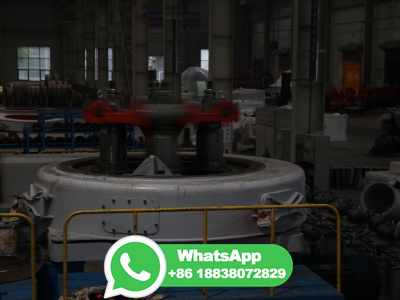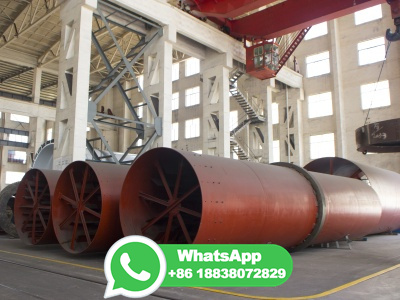
WEBJun 13, 2021 · The process should lower carbon dioxide emissions in all stages of steelmaking, including pelletizing iron ore, reducing iron oxides to iron, and producing crude steel. Source: Adapted from HYBRIT.
WhatsApp: +86 18203695377
WEBExplain the process of smelting iron. Explain the process of steel making; Solution: An ironore is a mineral substance that, when heated, yields metallic iron. Smelting of ironore is heating up the mineral with coal and limestone in an industrial oven to extract the iron. Molten iron is purified and converted into steel in a basic oxygen ...
WhatsApp: +86 18203695377
WEBJun 1, 2012 · The results indied that iron nugget making process depends mainly on heating time and temperature. And the iron nugget and slag can separate in a clean manner at 1673 K for 15 min. For the iron nugget, the C content is % (mass percent) and B is % (mass percent). The B 2 O 3 content of slag is %, and the boron .
WhatsApp: +86 18203695377
WEBIron and steel integrated producers (orebased) are typically large firms that operate ore and coal mines (frequently as joint ventures), as well as iron and steelmaking plants. ... Iron Making . When iron is being made ore, coke and stone are introduced through the top of the blast furnace at regular intervals. (Coke is the partially ...
WhatsApp: +86 18203695377
WEBJul 4, 2023 · Such a clean steel is suitable for a variety of appliions such as in improving steel property by adding boron [4], [5]. [6]. As scrap is available in abundance and cheaper in Syria, the cost of liquid iron produced from IF route (using scrap) is much lesser when compared to MBF hot metal (produced from iron ore, coke and other raw materials).
WhatsApp: +86 18203695377
WEBMar 22, 2023 · Making crucible steel was not at all a new process, but Huntsman pioneered a method using coke as the fuel around 174042 so that a purer steel than ever before could be made. ... The flask pivoted within a frame so that it could be tipped horizontally to allow iron ore to be placed inside, put vertically for the heating part, and .
WhatsApp: +86 18203695377
WEBThe Basic Oxygen Steelmaking process differs from the EAF is that BOF is selfsufficient in energy. The primary raw materials for the BOP are 7080% liquid hot metal from the blast furnace and the steel scrap need to be balanced. These are charged into the Basic Oxygen Furnace (BOF) vessel. Oxygen (>% pure) is "blown" into the BOF at ...
WhatsApp: +86 18203695377
WEBBessemer process, the first method discovered for massproducing steel. Though named after Sir Henry Bessemer of England, the process evolved from the contributions of many investigators before it could be used on a broad commercial basis. It was apparently conceived independently and almost concurrently by Bessemer and by William Kelly of .
WhatsApp: +86 18203695377
WEBThe typical properties of the iron ore pellets are given in Tab 1. Process technology. There are four stages involved in the production of iron ore pellets. These stages consist of (i) raw material preparation, (ii) formation of green balls or pellets, (iii) induration of the pellets, and (iv) cooling, storage and transport of pellets.
WhatsApp: +86 18203695377
WEBworldsteel expects that global endoflife scrap availability will reach about 600 Mt in 2030 and 900 Mt in 2050, a growth of more than 500 Mt in one of our main steelmaking raw materials in the next 30 years. The steelmaking process is able to remove most impurities that may be present in scrap steel. Hence 'downcycling' of steel scrap ...
WhatsApp: +86 18203695377
WEBFig. 3 shows a flow sheet of the SL/RN process. Sized lump iron ore (or pellets) and a relatively coarse fraction of noncoking coal are fed into the kiln from the feed end. Coal not only acts as a ...
WhatsApp: +86 18203695377
WEBSep 8, 2021 · The resultant iron plates are fed into an electric arc furnace, which turns it into steel. ULCOLYSIS operates at steelmaking temperature (around 1,550 deg C) with a molten salt electrolyte made of a slag (pyroelectrolysis). This process transforms iron ore at into liquid steel using electricity as a reducing agent.
WhatsApp: +86 18203695377
WEBMay 2, 2022 · The coke "steals" the oxygen from the iron oxide (in a chemical process called reduction), leaving behind a relatively pure liquid iron, while the limestone helps to remove the other parts of the rocky ore (including clay, sand, and small stones), which form a waste slurry known as slag. The iron made in a blast furnace is an alloy containing ...
WhatsApp: +86 18203695377
WEBAbout this book. This book describes improvements in the iron and steel making process in the past few decades. It also presents new and improved solutions to producing high quality products with low greenhouse emissions. In addition, it examines legislative regulations regarding greenhouse emissions all around the world and how to control ...
WhatsApp: +86 18203695377
WEBMay 22, 2024 · Unfortunately, steelmaking is an extremely dirty process. The most common way it's produced involves mining iron ore, reducing it in a blast furnace through the addition of coal, and then using an oxygen furnace to burn off excess carbon and other impurities. That's why steel production accounts for around 7 to 9 percent of humanity's ...
WhatsApp: +86 18203695377
WEBDec 20, 2021 · The process of reducing iron ore with H 2 is highly endothermic (Eqs. (1), (2), (3)) (Huang, 2013), and a large amount of extra heat is needed because no carbon source is added during the process. If the temperature of the inlet reducing gas remains unchanged, the burden materials in the shaft furnace will cool down rapidly when the .
WhatsApp: +86 18203695377
WEBSep 20, 2022 · MOE is a zeroCO2 emission process that uses direct electrolysis of iron oxide to produce highpurity iron plus oxygen, enabling full global decarbonization of the steel industry. Requirement #2: Be able to use of globally available iron ore feedstock Today's coalbased steel production uses the full range of traded iron ore .
WhatsApp: +86 18203695377
WEBAs the needs of the steel industry change, one production component looks to be increasingly important in meeting the needs of the modern steel industry: iron ore pelletizing. Iron ore pelletizing, or balling, is the process of transforming fines into spherical granules anywhere from 8 – 16mm in size via tumblegrowth (agitation ...
WhatsApp: +86 18203695377
WEBThe partially reduced ore is then smelted in the second unit, and liquid iron is produced. Smeltingreduction technology enables a wide range of coals to be used for iron making. Iron processing Ores, Smelting, Refining: Iron ores occur in igneous, metamorphic (transformed), or sedimentary rocks in a variety of geologic environments.
WhatsApp: +86 18203695377
WEBFEFFCEF006E006D ...
WhatsApp: +86 18203695377